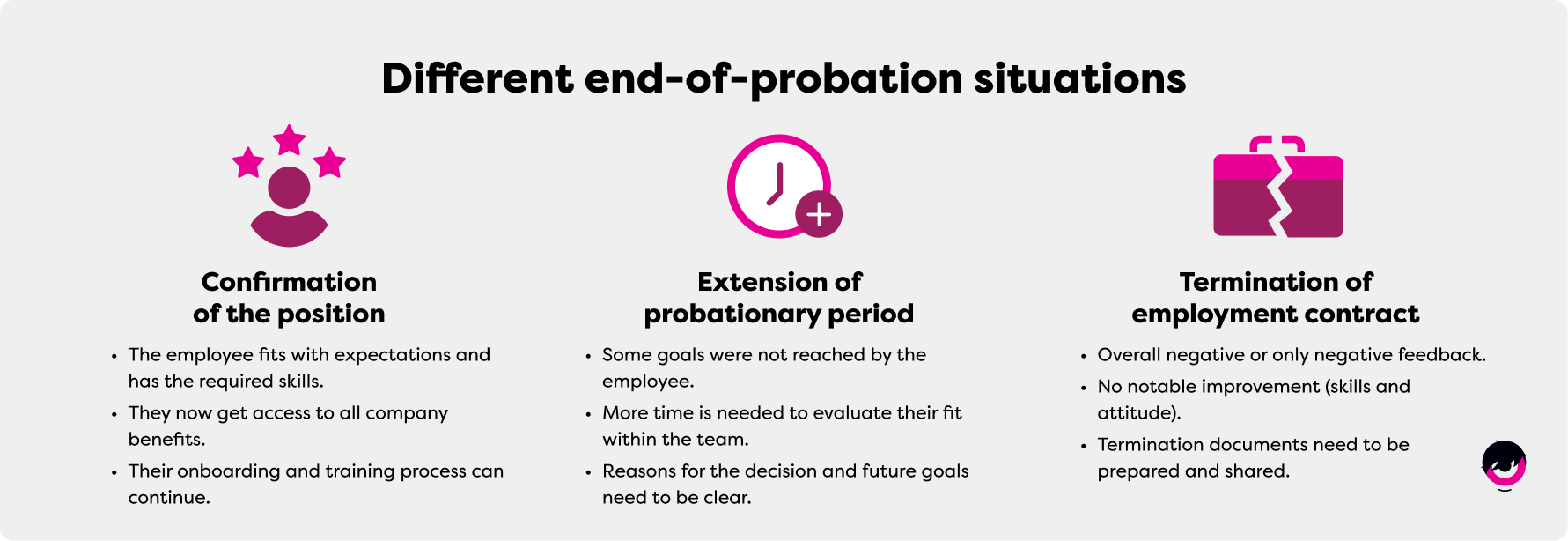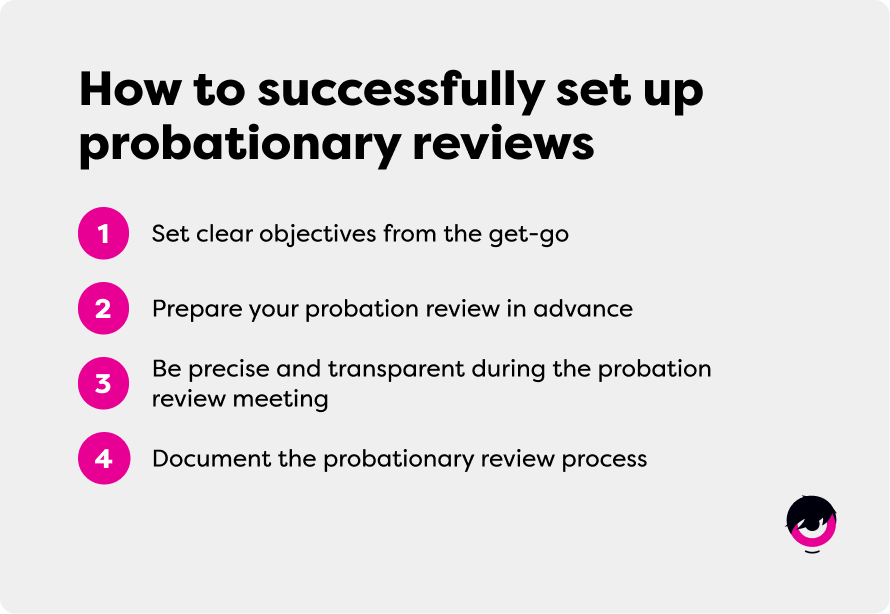The probationary period is an essential step for both employer and employee. During this period (which often lasts 3 to 6 months), both parties can assess their fit for the position and the company. While the employer assesses skills and attainment of goals, the employee learns about the company culture and determines whether they can see a future in their new role.
In this article, we share the 3 situations that can happen at the end of the probation period, practical tips to implement, and a probation review template for your company.

















